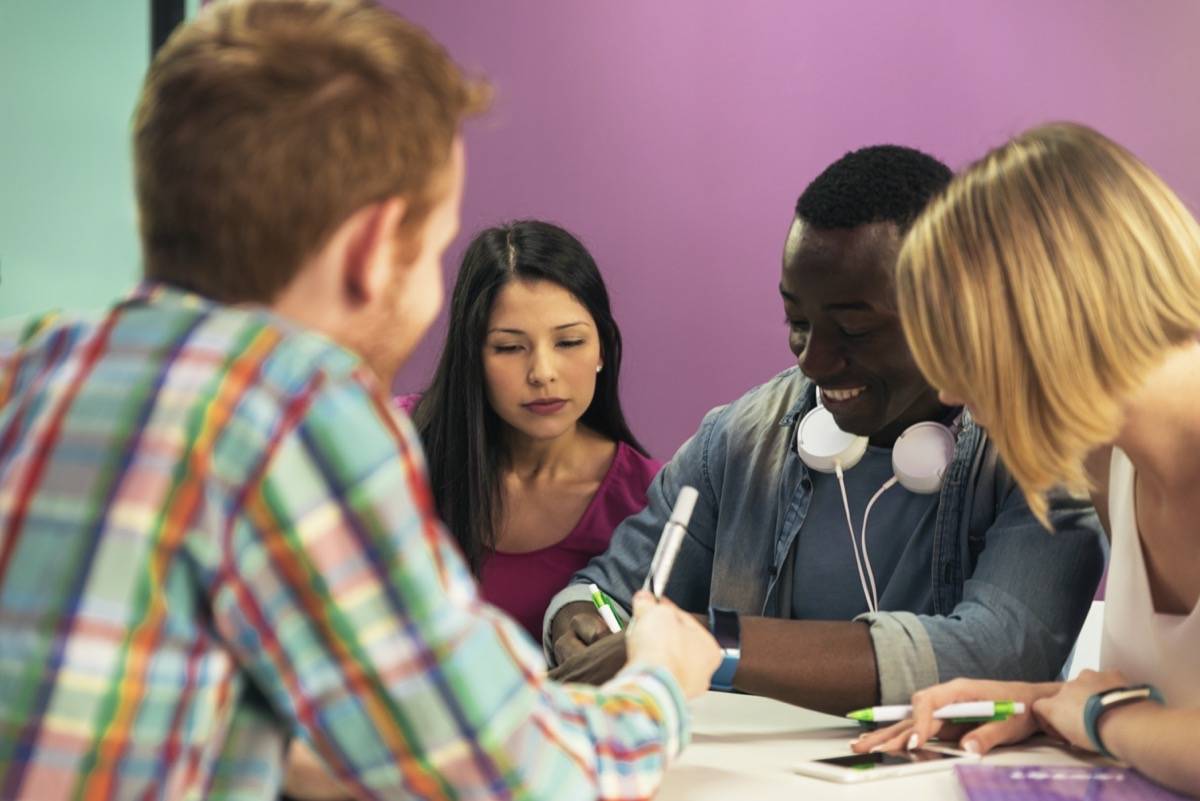Discover what makes collaborative learning environments so effective in this in-depth article. Explore factors like clear goals, active participation, effective communication, and more.
Collaborative learning environments have become increasingly popular in educational settings, and for good reason. These unique educational spaces foster effective learning experiences that go beyond traditional classroom structures. By promoting group work, active participation, and shared accountability, collaborative learning environments provide students with the opportunity to develop crucial skills such as communication, critical thinking, and problem-solving. In this article, we explore the key factors that contribute to the effectiveness of collaborative learning environments, shedding light on their immense benefits in preparing students for success in the modern workforce.
Clear and shared goals
In a collaborative learning environment, it is crucial to have clear and shared goals among participants. Defining these objectives provides a sense of direction and purpose to the learning experience. By establishing specific and measurable goals, participants can work towards a common understanding of what needs to be accomplished.
Ensuring goals are shared among participants is equally important. By involving all individuals in the goal-setting process, there is a higher likelihood of commitment and engagement. When everyone has a voice in determining the goals, it fosters a sense of ownership and accountability throughout the collaborative learning journey.
Developing a common understanding of the goals is the next step towards effectiveness. This involves clarifying any uncertainties or ambiguous aspects associated with the objectives. By collectively discussing and aligning perspectives, participants can establish a shared vocabulary and set expectations that allow for more targeted and meaningful collaboration.
Active participation
Active participation is a cornerstone of an effective collaborative learning environment. It involves engaging all participants in the learning process, ensuring that everyone’s contributions are valued and heard. By actively involving individuals, there is a greater opportunity for diverse perspectives and ideas to emerge, leading to richer discussions and deeper learning.
Promoting equal contributions is essential to create a fair and inclusive environment where every voice is valued. It is crucial to avoid dominant voices overpowering the conversation and instead encourage active participation from all individuals. This can be achieved by establishing norms that promote equity and by providing opportunities for quieter participants to contribute.
Encouraging diverse perspectives is also key to an effective collaborative learning environment. By embracing different viewpoints and encouraging individuals to share their unique perspectives and experiences, a rich exchange of ideas can occur. This diversity of perspectives fosters critical thinking and challenges assumptions, allowing for a deeper exploration of the subject matter.
Effective communication
Effective communication is a fundamental aspect of any collaborative learning environment. It involves encouraging open and respectful dialogue among participants. By creating a safe space for individuals to express their thoughts and opinions, a culture of trust and collaboration can be established.
Providing opportunities for meaningful exchange is crucial to effective communication. This can be done by incorporating interactive activities and discussions that encourage participants to actively listen to each other and respond thoughtfully. By creating an environment where individuals feel comfortable sharing and engaging with each other’s ideas, the quality of communication and learning can be greatly enhanced.
Using multiple modes of communication, including verbal, written, and visual, is another crucial aspect of effective communication in a collaborative learning environment. By utilizing various forms of communication, participants with different communication styles and preferences can engage in the learning process more effectively. This inclusivity allows for a better understanding and dissemination of information within the group.
Collaborative problem-solving
Collaborative problem-solving is an essential skill developed in an effective collaborative learning environment. Fostering a culture of shared responsibility is key to encourage individuals to collectively tackle challenges. By promoting the idea that everyone’s input is valuable, participants are more likely to actively contribute and take ownership of problem-solving.
Encouraging teamwork and cooperation is crucial in collaborative problem-solving. By fostering an environment where individuals recognize and appreciate each other’s strengths, participants can effectively collaborate to find innovative and effective solutions. This involves promoting effective group dynamics, such as effective communication, active listening, and the distribution of tasks and roles.
Promoting critical thinking and creative solutions is another aspect of collaborative problem-solving. By encouraging participants to critically analyze problems and explore multiple perspectives, they can develop a deeper understanding and generate innovative ideas. This involves asking open-ended questions, challenging assumptions, and allowing for experimentation and exploration in the problem-solving process.
Supportive learning environment
Creating a supportive learning environment is paramount in an effective collaborative learning environment. This involves creating a safe and inclusive space where participants feel comfortable expressing themselves and taking risks. By establishing an environment free from judgment and fostering a culture of respect, participants can openly engage in the learning process.
Building trust among participants is another critical aspect of creating a supportive learning environment. Trust enables individuals to feel comfortable sharing their ideas, taking risks, and providing constructive feedback to one another. It is achieved by consistently modeling respect, actively listening to others, and valuing each person’s contributions.
Offering emotional and academic support is also vital in fostering a supportive learning environment. This includes providing resources and assistance to individuals who may need extra help or guidance. By recognizing and addressing the diverse needs of participants, the collaborative learning environment becomes more inclusive and equitable, allowing for successful learning outcomes for all.
Appropriate use of technology
The appropriate use of technology can greatly enhance collaboration in a learning environment. Selecting tools that enhance collaboration is crucial to the effectiveness of a collaborative learning environment. Whether it is a collaboration platform, video conferencing software, or shared document editing tools, the technology should facilitate effective communication and collaboration among participants.
Ensuring accessibility and usability of technology is another important consideration. All participants should have equal access to technology, regardless of their physical or cognitive abilities. It is essential to choose tools that are user-friendly and accommodate different learning styles and needs. Providing training and support for technology integration is also necessary to ensure that participants can effectively use the tools and overcome any potential barriers.
Effective facilitation
Effective facilitation is key to maintaining a productive and inclusive collaborative learning environment. The facilitator plays a crucial role in guiding and organizing collaborative activities. This involves setting clear objectives, establishing norms and guidelines, and structuring activities to facilitate meaningful collaboration.
Promoting equal participation and engagement is an essential aspect of effective facilitation. The facilitator should ensure that all participants have the opportunity to contribute and engage actively in the collaborative learning process. This can be achieved by actively encouraging quieter participants to share their thoughts, balancing participation, and managing dominant voices.
Facilitating conflict resolution and consensus-building is another critical role of the facilitator. In any collaborative environment, conflicts can arise, and it is essential to address them in a constructive manner. By creating a safe space for dialogue and providing tools and strategies for conflict resolution, the facilitator enables participants to work through their differences and reach consensus.
Feedback and reflection
Effective feedback and reflection are crucial elements of an effective collaborative learning environment. Providing timely and constructive feedback allows participants to learn from their experiences and make improvements. The feedback should be specific, actionable, and focused on the goals of the collaboration. By highlighting strengths and areas for improvement, participants can enhance their collaborative skills and outcomes.
Encouraging self-reflection and self-assessment is also important in a collaborative learning environment. By providing opportunities for individuals to reflect on their own contributions and learning experiences, they can take ownership of their learning journey. This self-reflection helps participants identify their strengths and areas for growth, leading to continuous improvement and growth.
Promoting continuous improvement and growth is the final aspect of feedback and reflection. By recognizing that collaboration is a dynamic process, participants can strive for ongoing improvement. This involves creating a culture of learning and adaptability, where participants are encouraged to iterate, experiment, and learn from both successes and failures.
Cultural and diversity awareness
In an increasingly diverse and interconnected world, cultural and diversity awareness is crucial in a collaborative learning environment. Recognizing and valuing different backgrounds and perspectives enriches the collaborative learning experience and fosters a deeper understanding of complex issues.
Creating opportunities for cross-cultural learning is an important aspect of cultural and diversity awareness. By intentionally designing activities and discussions that expose participants to diverse perspectives and experiences, individuals can broaden their horizons and develop empathy and understanding. This cross-cultural learning promotes inclusivity and helps participants navigate and appreciate diverse cultural contexts.
Building empathy and understanding among participants is another crucial element of cultural and diversity awareness. By encouraging individuals to actively listen and seek to understand different viewpoints, stereotypes and biases can be challenged and overcome. This empathy and understanding create a collaborative learning environment that values and respects diversity, leading to more holistic and meaningful learning outcomes.
Assessment and accountability
Assessment and accountability are essential components of an effective collaborative learning environment. Designing assessment methods that measure collaborative skills is crucial in evaluating participants’ growth and progress. Traditional forms of assessment, such as tests and quizzes, may not capture the full spectrum of collaborative skills. Instead, assessments should focus on evaluating participants’ ability to work effectively in a team, communicate and contribute to group discussions, and problem-solve collaboratively.
Setting clear expectations for individual and group accountability is also important. Participants should be aware of their responsibilities within the collaborative learning environment and understand the consequences of their actions. This promotes a sense of shared responsibility and ensures that everyone is actively engaged and dedicated to achieving the group’s goals.
Evaluating the effectiveness of the collaborative learning environment is the final aspect of assessment and accountability. Regularly assessing the impact of the collaborative learning environment allows for ongoing improvement and refinement. By collecting feedback from participants and analyzing the outcomes and experiences, adjustments can be made to optimize the effectiveness of the collaborative learning environment.


